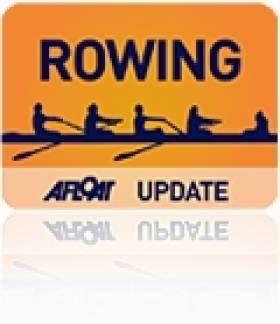Displaying items by tag: Arrival
Ireland's Golden Boys Set To Return after World Rowing Championships
#Rowing: The Ireland gold medallists Mark O’Donovan and Shane O’Driscoll and Paul O’Donovan are due to arrive back in Ireland tomorrow (Sunday). They are due in Dublin Airport at about 10 o’clock. They will travel to Skibbereen for a special event in the evening.
Gary O’Donovan, who took a silver medal at the Olympic Games but missed the World Rowing Championships in Florida through illness, will also be flying in.
Hennigan Home From Record-Breaking Row
#Rowing: Ocean rower Gavan Hennigan arrived in Dublin Aiport today to a warm welcome from family, friends and supporters. The Galway man, who rowed across the Atlantic from the Canaries to Antigua in a new record time for a solo oarsman for this course of 49 days 11 hours 37 minutes and 21 seconds, looked thin but healthy. “This is nice, but it is a huge contrast to what I was at ten days ago,” he said. Did he find it strange being on dry land? “Yes. I enjoy the trappings of the modern world, but I miss the sea.” He spoke of feeling that there was “unfinished business” on the ocean, though any new plans are under wraps.
One of the first to greet him was his mother, Julie. His mother’s father, John Egan, had been a Gaelic footballer with Castlebar Mitchels, and Hennigan took his grandfather’s medals with him on the ocean row for inspiration. John Egan captained three consecutive county senior championship winning teams, in 1930, 1931 and 1932.
Battleborn Reaches Shore In Hawaii in Great Pacific Race
#ROWING: Battleborn, skippered by Irishman Philip Cavanagh, has landed in Hawaii, completing the Great Pacific Race from Monterey in California in 45 days, seven hours and 24 minutes. The crew of Cavanagh, Britons Barry Hayes and Darren Taylor and Australian Dan Kierath were the second home in the race. Their boat, Patience, flew the Irish flag. They arrived in the early hours of the morning, Irish time. Among those waiting on shore were Philip’s parents, Carmel and Michael Cavanagh.






























































